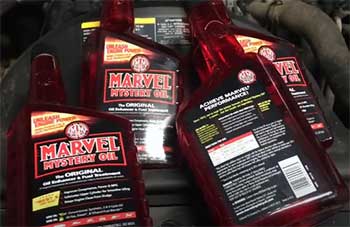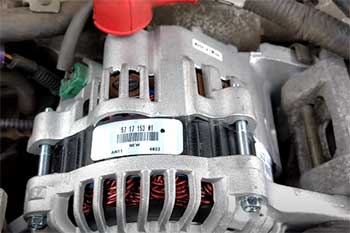I’m not one to geek out over car parts, but when it comes to keeping your engine humming, the NAPA ProFormer oil filter is a game-changer. It’s affordable, reliable, and punches above its weight for everyday drivers like you and me.
Whether you’re cruising through city traffic or tackling long highway hauls, this filter delivers solid performance without breaking the bank. In this article, I’ll walk you through my experience, break down the pros and cons, compare it to other brands, and share maintenance tips to keep your engine in top shape.
Trust me, this is one upgrade you’ll want to make.
My Experience With The NAPA ProFormer Oil Filter
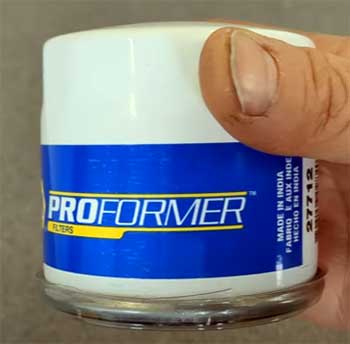
Picture this: I’m in my garage, sleeves rolled up, ready to tackle an oil change on my 2018 Toyota Camry.
I’d been hearing buzz about the NAPA ProFormer oil filter, so I decided to give it a whirl.
At $6.49, it was cheaper than some premium filters I’d used, but I was skeptical—could something this budget-friendly really hold its own?
I grabbed my wrench, popped the hood, and got to work.
The first thing I noticed was how easy it was to install.
The filter’s canister felt sturdy, not flimsy like some knockoff brands I’ve tried. The threads were well-machined, so it screwed on smoothly without any cross-threading nightmares.
I gave it the standard three-quarter turn after the gasket made contact, and it sat snugly in place. No leaks, no fuss. I poured in some Mobil 1 full synthetic, fired up the engine, and listened.
The motor purred like it always does, but I was curious to see how the ProFormer would perform over time.
Over the next few months, I put about 4,500 miles on my Camry—mostly city driving with some weekend road trips. I’m that guy who checks under the hood more than necessary, so I kept an eye on things.
The oil stayed cleaner longer than I expected, and there were no weird pressure drops or engine noises. I even took it to my mechanic buddy for a quick look, and he gave it a thumbs-up. He mentioned the filter’s 96% efficiency at 20 microns, which is solid for a filter in this price range.
By the time I hit 5,000 miles, I was ready to swap it out, but the ProFormer had earned my respect. It wasn’t flashy, but it got the job done without any drama.
What really sold me was the value. I’ve spent double on filters that didn’t perform noticeably better. The ProFormer isn’t perfect—more on that later—but for the price, it’s hard to beat.
I felt like I’d found a hidden gem in the auto parts aisle, and I was already planning to grab another for my wife’s SUV.
What Makes The NAPA ProFormer Stand Out?
Let’s talk about why the ProFormer deserves a spot in your cart. It’s not just another oil filter; it’s designed with everyday drivers in mind. NAPA markets this as a filter that meets OEM requirements, which means it’s built to fit your vehicle like a glove and perform reliably under normal driving conditions.
The anti-drain back valve is a big win—it keeps oil in the filter when your engine’s off, so you don’t get that annoying dry start that can wear down your engine over time. Plus, the filter’s dirt-holding capacity is impressive for its size, trapping contaminants without clogging up too fast.
- Built for the Daily Grind
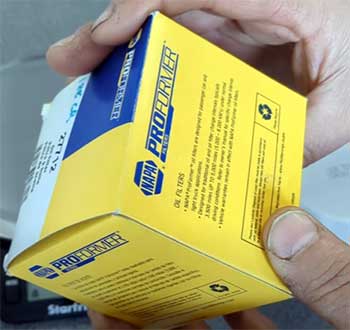
If you’re like me, your car sees a mix of stop-and-go traffic, errands, and the occasional road trip.
The ProFormer is engineered for this kind of driving. Its cellulose-based media does a solid job of capturing dirt and metal particles, keeping your oil cleaner for longer.
I noticed my oil wasn’t as dark as it used to be with cheaper filters, which tells me the ProFormer is doing its job.
It’s rated for up to 5,000 miles, and in my experience, it holds up well within that range.
For most folks who change their oil every 3,000 to 5,000 miles, this filter is a perfect match.
- Wallet-Friendly Without Skimping
Let’s be real—car maintenance can feel like a money pit. The ProFormer’s price tag is a breath of fresh air. At around $6 to $7, it’s cheaper than many premium filters but doesn’t feel like a compromise.
I’ve used filters that cost twice as much and didn’t notice a huge difference in performance. The ProFormer gives you bang for your buck, especially if you’re sticking to a budget but still want something reliable. It’s like finding a great burger joint that doesn’t charge gourmet prices.
- Easy to Find and Install
One thing I love about NAPA is how easy it is to get their parts. Whether you’re swinging by a store or ordering online, the ProFormer is widely available. And installation?
A breeze. The canister’s grip makes it easy to twist on and off, even with oily hands. I didn’t need to wrestle with it or curse at it, which is more than I can say for some filters I’ve used. If you’re a DIYer, you’ll appreciate how straightforward it is to work with.
Where The ProFormer Falls Short?
No product is perfect, and the ProFormer has its quirks. While it’s a solid choice for most drivers, there are a few areas where it doesn’t quite measure up to the competition.
- Limited Mileage Range
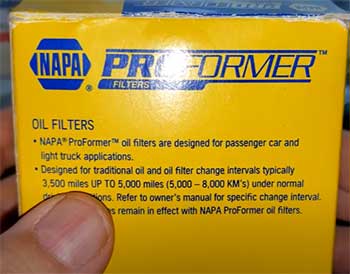
The ProFormer is rated for 5,000 miles, which is fine for conventional oil changes but falls short if you’re using high-end synthetics and pushing for 7,500 or 10,000 miles.
I tried stretching it to 6,000 miles once, and while nothing catastrophic happened, the oil looked dirtier than I’d like.
If you’re someone who likes extended oil change intervals, you might want to look at a premium filter like the NAPA Platinum or Fram Ultra Synthetic.
The ProFormer is great for shorter cycles, but it’s not built for marathon runs.
- Basic Filtration Media
Don’t get me wrong—the ProFormer’s cellulose media gets the job done. But it’s not as advanced as the synthetic media you’ll find in pricier filters. Synthetic media can trap smaller particles and hold up better under extreme conditions.
For most of us, the ProFormer’s 96% efficiency at 20 microns is plenty, but if you’re driving in dusty environments or towing heavy loads, you might want something with a bit more muscle. I didn’t have issues in my Camry, but I wouldn’t trust it for a work truck hauling gravel all day.
- Manufacturing Origins Raise Eyebrows
There’s some chatter online about where these filters are made. Mine was stamped “Vietnam,” and I’ve seen others labeled “India” or “China.” While the quality seems consistent, some folks prefer filters made in the USA, like the NAPA Gold used to be.
I didn’t notice any defects, but the offshore manufacturing makes me wonder about long-term reliability. It’s not a dealbreaker, but it’s something to keep in mind if you’re picky about where your parts come from.
How Does The ProFormer Stack Up Against The Competition?
I’ve tried a bunch of oil filters over the years, so I wanted to see how the ProFormer compares to some heavy hitters in the market. Let’s break it down by brand, keeping things real and conversational.
- Fram Ultra Synthetic
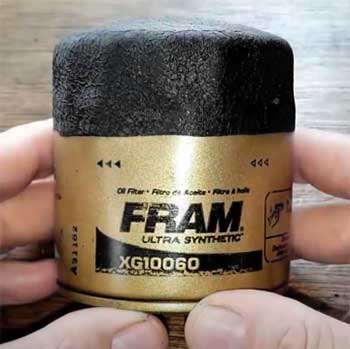
Fram’s Ultra Synthetic is like the fancy cousin of the ProFormer.
It boasts a synthetic wire-backed media that traps 99% of particles at 20 microns and can handle up to 20,000 miles with the right oil.
I used one on my old Honda Accord, and it was a beast—oil stayed crystal clear even after 8,000 miles.
But here’s the catch: it costs about $12 to $15, double the ProFormer’s price.
For most drivers, the extra filtration and mileage aren’t necessary unless you’re running synthetic oil and pushing long intervals.
The ProFormer holds its own for shorter cycles and saves you a few bucks.
- Wix XP
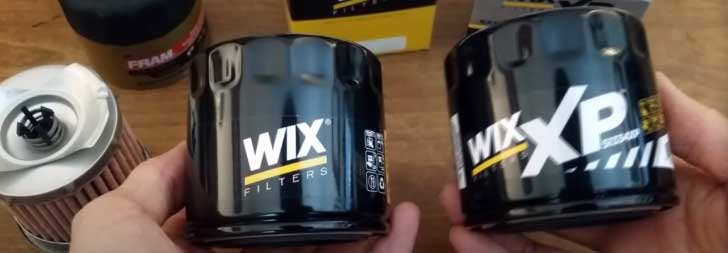
Wix XP filters are another step up, designed for tough conditions like towing or extreme temperatures. I tossed one on my brother’s F-150, and it handled his heavy towing like a champ.
The synthetic media and robust construction make it a favorite for truck owners, with efficiency close to 98% at 20 microns. But at $10 to $13, it’s pricier than the ProFormer, and the extra durability feels overkill for my Camry’s daily commute.
If you’re not putting your vehicle through the wringer, the ProFormer’s simpler design gets the job done without the premium price tag.
- Mobil 1 Extended Performance
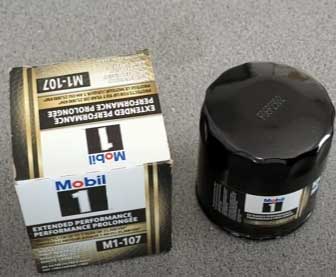
Mobil 1’s Extended Performance filter is a premium option, often paired with their synthetic oils.
I tried one during a phase when I was obsessed with maxing out my oil change intervals.
It’s rated for 15,000 miles and uses a synthetic blend media that traps tiny particles.
Performance-wise, it’s stellar, but at $15 to $20, it’s over three times the cost of the ProFormer.
For my driving habits—mostly city miles with occasional highway trips—the ProFormer delivers 90% of the performance for a third of the price.
Unless you’re a mileage warrior, you probably don’t need the Mobil 1.
- Purolator ONE
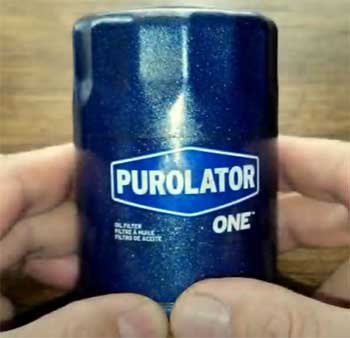
Purolator ONE is a solid middle-ground filter, priced around $8 to $10.
I used one on my wife’s RAV4, and it performed well, with a 99% efficiency at 20 microns and a 7,500-mile rating.
The media is a blend of cellulose and synthetic, which gives it an edge over the ProFormer’s basic cellulose.
But the ProFormer’s anti-drain back valve worked just as well in my tests, and the price difference isn’t huge.
If you’re splitting hairs, Purolator ONE might be slightly better for longer intervals, but the ProFormer’s value makes it a tough one to pass up.
Maintenance Tips To Get The Most Out of Your ProFormer
You’ve got your ProFormer filter, and you’re ready to keep your engine happy. Here are some tips I’ve learned from years of wrenching on my cars to make sure you’re getting the best performance out of this filter.
- Stick To The 5,000-Mile Rule
The ProFormer is rated for 5,000 miles, and I’d recommend sticking to that. I tried pushing it to 6,000 once, and the oil started looking grimy. If you’re using conventional oil, change it every 3,000 to 4,000 miles to be safe.
With synthetic oil, 5,000 miles is the sweet spot. Check your vehicle’s manual, but for most cars, this interval keeps the ProFormer working at its best. Set a reminder on your phone so you don’t forget—trust me, it’s easy to lose track.
- Inspect the Gasket Every Time
One thing I always do before installing a filter is check the gasket. The ProFormer’s rubber gasket is solid, but I’ve heard horror stories about defective ones causing leaks.
Run your finger around it to make sure it’s seated properly and not pinched. Before screwing it on, dab a bit of fresh oil on the gasket to help it seal and make removal easier next time. It takes 10 seconds and saves you from a messy cleanup.
- Don’t Overtighten
I learned this the hard way—cranking the filter on too tight makes it a nightmare to remove later. After the gasket touches the mounting surface, give it a three-quarter turn with your hand or a filter wrench.
That’s enough to secure it without turning it into a permanent fixture. The ProFormer’s canister is sturdy, but overtightening can still cause issues, especially if you’re using a cheap wrench that slips.
- Pair It with Quality Oil
The ProFormer is a workhorse, but it can’t compensate for lousy oil. I’ve had great results pairing it with Mobil 1 or Valvoline full synthetic. If you’re on a budget, a high-quality conventional oil like Castrol GTX works fine, too.
The filter’s job is to clean the oil, but starting with good oil gives it less work to do. Check your owner’s manual for the right viscosity—my Camry loves 0W-20, but yours might be different.
- Keep an Eye on Driving Conditions
If you’re driving in dusty areas or doing a lot of stop-and-go traffic, the ProFormer might clog up faster. I noticed this when I spent a summer shuttling kids to camps in a dusty suburb. Check your oil’s color and consistency every couple of months.
If it’s turning black or gritty before 5,000 miles, swap the filter and oil early. The ProFormer handles normal conditions well, but extreme environments demand a bit more attention.
Frequently Asked Questions (FAQ)
NAPA ProFormer oil filters are manufactured by Premium Guard, a well-regarded company known for producing affordable yet reliable filters. While some folks speculate about other manufacturers, my research points to Premium Guard as the primary supplier. They’re made in places like Vietnam or India, which keeps costs down without sacrificing too much quality.
The NAPA ProFormer is an entry-level oil filter designed for everyday driving. It’s built to meet OEM fitment standards, offering 96% efficiency at 20 microns and up to 5,000 miles of engine protection. With a cellulose media and a silicone anti-drain back valve, it’s a budget-friendly option for drivers who want reliable filtration without the premium price tag.
While my focus here is on the ProFormer oil filter, the ProFormer air filter shares similar traits—affordable and functional for standard use. It’s decent for city or highway driving but may not hold up as well in dusty conditions compared to premium options like NAPA Gold. If you’re maintaining regular air filter changes, it’s a solid choice for the price.
Not across the board. While NAPA Gold and Platinum filters were historically made by Wix, the ProFormer is produced by Premium Guard. Recent discussions suggest NAPA has shifted some manufacturing away from Wix, especially for their budget lines. My ProFormer was made in Vietnam, not a Wix facility, so don’t assume all NAPA filters are Wix anymore.
Why The NAPA ProFormer Is Your Engine’s Best Friend?
After months of testing and tinkering, I can say the NAPA ProFormer oil filter is a steal for what it offers. It’s not the flashiest, but it delivers reliable performance, easy installation, and a price that won’t make you wince.
For everyday drivers who want to keep their engine clean without overspending, this filter is a no-brainer. Pair it with good oil, follow my maintenance tips, and your car will thank you.
Head to your local NAPA or their website and grab one—you’ll be glad you did.
